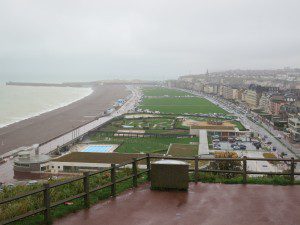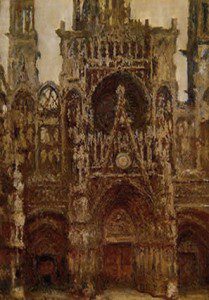
07 Oct TIO IN FRANCE: ON THE ROAD AGAIN
 Clearing immigration in London, the suit at the desk wanted to know why anyone (in their right mind) would travel to London to get to France. Good question. Simple answer: Clint and I travel on passes. Based on the loads, the odds of getting to London looked jolly good; to the the City of Light, not so much. We chose the path of least resistance.
Clearing immigration in London, the suit at the desk wanted to know why anyone (in their right mind) would travel to London to get to France. Good question. Simple answer: Clint and I travel on passes. Based on the loads, the odds of getting to London looked jolly good; to the the City of Light, not so much. We chose the path of least resistance.
Once we arrived in London, the plan was to experience the drive through the Channel Tunnel then make our way over two days to our first charted destination, St. Jean-De-Luz near Biarrtiz in French Basque country. Turns out that is not as simple as paying a toll. Clicking our heels and hoping for the best might have been easier.
Chunnel travelers – the term not to be confused with the perjorative New Yorkers use to describe Snooky & the Gang from Joisey – need to have made reservations. And a person doesn’t get to drive through the Chunnel. You and your car get to get driven on a special train that leaves from Chunnel Central, (a world unto itself with shops, takeout food, and lots of screaming kids), departing Folkestone, Kent, England to arrive about 30 minutes (and 30 miles) later in Coquelles, Pas-de-Calais, France.
From Calais, we headed (mostly) south taking the scenic route, bypassing the toll roads (and speed) for views of the verdant farmland along the coast. Think Nicholas Poussin’s classic landscapes: trees and cows dominate a blissful Arcadian scene, where man is a detail for scale.
We called it a day – a very long day and then some, since we had left JFK Thursday, October 4, arriving in London, Friday morning, October 5, then driving – after about four hours, landing in Dieppe.
First recorded as a small fishing settlement in 1030, Dieppe is a port on the English Channel, these days known mostly for its pebbled beach, scallops and a 15th-century castle, Chateau de Dieppe, a museum and exhibition space. During WWII, the town was occupied by the Germans after the fall of France in 1940. A failed raid in 1942 to recapture the town cost the Allies, particularly the Canadians, plenty. Dieppe was not liberated until 1944.
We stayed at one of the hotels on the beach, which like the town, has seen better days – though the views from our deck of the stormy Channel were spectacular. On the recommendation of locals, dinner was at a bistro specializing in seafood. We were not disappointed: the tarte de canard (duck encased in a delicate phyllo) appetizer was delicately seasoned, light and moist. The main course, a Marmite Dieppoise, a melange of local fish specialities including a sample of the local coquilles (scallops), was as flavorful, fresh and unfussy as one would expect from the catch of day.
We left the Hotel Windsor 11 a.m. sharp, then fully adjusted to the time change, and continued on the scenic route, stopping briefly in Rouen with two objectives: get lunch and see the Roman Catholic Gothic Cathedral, Notre-Dame de Rouen, immortalized by Claude Monet, who painted a large series of images of the dramatic wedding cake of a building, same scene, different times of day, different weather conditions.
Rouen Cathedral is the epicenter of the town: Easy peasy. Lunch? Well, New Rules apply: Go where parking is possible. Which turned out not to be of the chic eateries at the center of town. We were forced to park on the outskirts, where we found a brasserie specializing in grillade where The Simpsons (speaking French) blared from the TV. There we thoroughly enjoyed a simple meal of grilled lamb, pommes frites (French fries) and haricots verts (string beans). The owners of the little restaurant would not have a clue about “farm to table cuisine” – but that’s what it was: lamb, beans, potatoes, from a neighbor or near neighbor’s farm.
On the road again, this time with a mission, Clint’s mission: see the Le Mans race track.
“Twenty-four hours of Le Mans” is the world’s oldest active sport car endurance race, (since 1923). The course , the Circuit de la Sarthe, is unceremoniously indicated by road signs on the highways and byways around town. We could have followed the track for auld lang syne, but chose not to under wet driving conditions.
Onward to Tours, where New Rules dominated once again: we found our hotel because it was close to the place we could park our car for the night. And the charming concierge Amondine at Alliance Hotel, a no-frills business (but extremely comfortable and well-appointed) traveler’s resting place, recommended the Vietnamese restaurant just across the street for a late dinner, which turned out to be as billed: simple (a caramelized pork dish, chicken almondine, steamed rice) and wonderful.
Tours is at the heart of chateau country. Tomorrow we plan to visit two en route to St. Jean de Luz.




Sorry, the comment form is closed at this time.